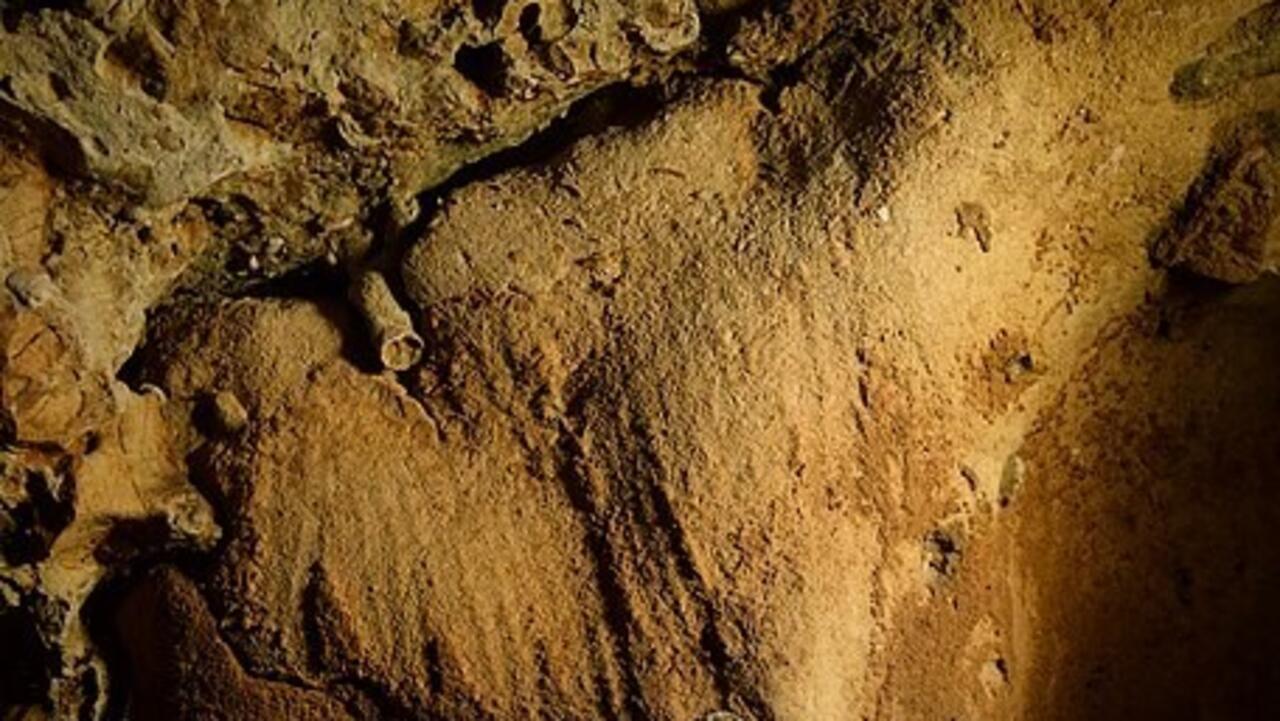A groundbreaking discovery in the La Roche-Cotard cave in France has challenged long-held assumptions about the intellectual and artistic capabilities of Neanderthals. Recently, archaeologists uncovered engravings believed to be 57,000 years old, attributed to Neanderthals. This finding reshapes our understanding of prehistoric art, cognitive development, and the cultural identity of our ancient relatives.
The Discovery of the Engravings
In 2023, researchers conducting excavations in La Roche-Cotard cave in central France found a series of deliberate, geometric engravings on the limestone walls. The engravings consist of crisscrossed patterns, hatching marks, and lines forming intentional motifs. These carvings predate modern Homo sapiens’ arrival in the region, confirming their Neanderthal origin.
The cave had been sealed by sediment for over 50,000 years, preserving the engravings in their original form. Advanced dating techniques, including optically stimulated luminescence (OSL), established their remarkable age of 57,000 years.
Significance of the Engravings
The presence of engravings from this period is a pivotal discovery for multiple reasons:
Neanderthal Symbolism and Abstract Thought
The engravings suggest that Neanderthals engaged in symbolic behavior and possessed a level of abstract thinking previously attributed only to modern humans.
The intentional nature of the markings indicates they were not accidental but deliberately created for a purpose.
Neanderthal Artistry
While previous discoveries of ochre-stained shells and cave paintings in Spain hinted at Neanderthal artistic expression, the La Roche-Cotard engravings provide undeniable evidence of Neanderthal artistry in Europe.
This contradicts earlier beliefs that Neanderthals lacked the capacity for artistic creation.
Challenging the Notion of ‘Primitive’ Neanderthals
For decades, Neanderthals were depicted as brutish and intellectually inferior to Homo sapiens. However, findings like these prove they were capable of cultural and artistic activities, narrowing the cognitive gap between the two species.
How Were the Engravings Made?
Microscopic analysis suggests that the engravings were created using stone tools or possibly fingers. The deep grooves and consistency of the marks indicate that Neanderthals repeatedly carved into the limestone, implying patience and intent.
The engravings’ placement also suggests they were made in a context of social or ritual significance. The marks are located in a secluded part of the cave, away from practical areas where food or tools might have been stored, hinting at their potential spiritual or symbolic meaning.
Other Evidence of Neanderthal Art and Culture
The La Roche-Cotard engravings are not the first sign of Neanderthal creativity. Other findings support the idea that Neanderthals engaged in symbolic behavior:
Spanish Cave Paintings (64,000 Years Old)
In Spain, red and black pigments were used to create hand stencils and abstract symbols long before Homo sapiens arrived in Europe.
Perforated Shells and Pigments (50,000+ Years Old)
Neanderthals in Spain and Italy adorned shells with ochre, likely used as personal ornaments.
Burial Practices
Neanderthal burial sites with grave goods, including flowers and tools, suggest a form of ritualistic behavior and concept of an afterlife.
Music and Sound Tools
A possible Neanderthal flute, carved from a bear femur with strategically placed holes, was discovered in Slovenia.
Implications for Human Evolution
The discovery of Neanderthal engravings has profound implications for how we view human evolution:
Neanderthals Were Not Inferior
Instead of being cognitively limited, they demonstrated problem-solving abilities, cultural behaviors, and symbolic thinking.
Parallel Evolution of Symbolism
Artistic expression and symbolic thought may have evolved independently in Neanderthals, rather than being solely acquired through interaction with Homo sapiens.
New Definition of ‘Human’
If Neanderthals were capable of art and symbolism, should we reconsider the strict distinctions between them and modern humans?
Conclusion
The 57,000-year-old engravings from La Roche-Cotard provide compelling evidence of Neanderthal creativity and intelligence. This discovery redefines our perception of Neanderthals, proving they were far more sophisticated than once thought. As researchers uncover more evidence of their symbolic expression, we may eventually recognize Neanderthals not as primitive ancestors but as complex beings with a culture and history.
With ongoing research, we may continue to find new insights that reshape our understanding of Neanderthal cognition, art, and social structures. The engravings at La Roche-Cotard are just the beginning of a deeper exploration into our closest evolutionary relatives’ rich and fascinating world.

